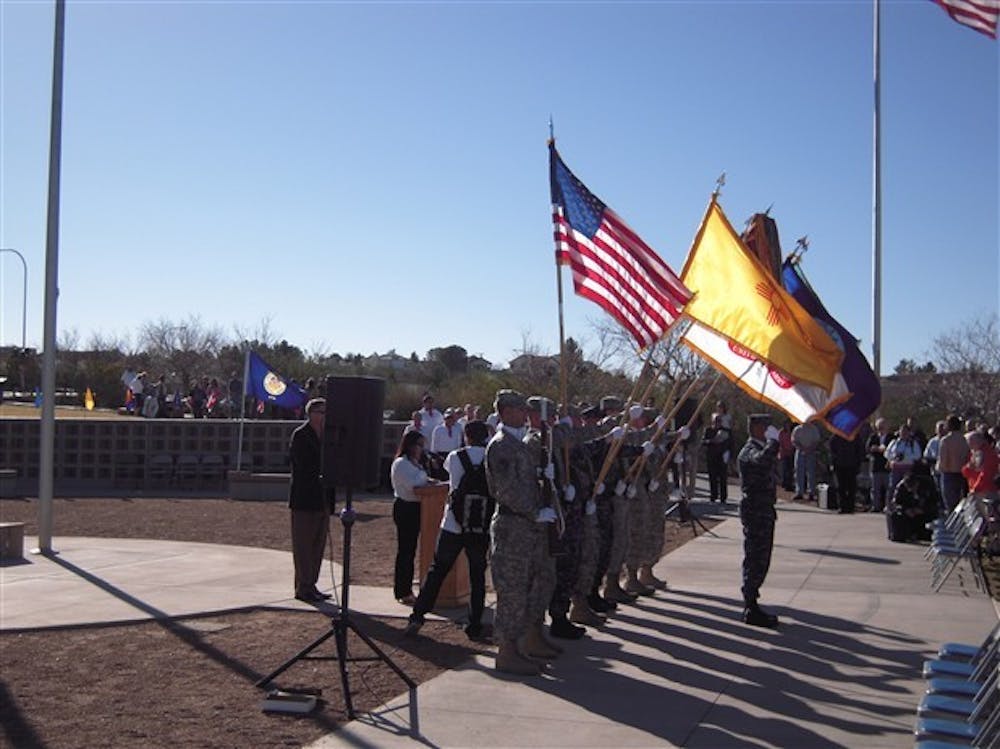Heat, sun and a 35 pound rucksack were the only things standing between the Bataan March participants and their goal. That and 26.2 miles.
Major Andrew Anderson, professor of military science at Elon University, and Cadet Jack Blanchflower, a junior, spent the last day of Elon’s spring break in the desert, marching a marathon across the White Sands Missile Range of New Mexico for the 23rd annual Bataan Memorial Death March, which commemorates the American soldiers that fought in the Philippines during World War II. Scabbard and Blade, the military honor society that serves a consortium of seven schools in the region and allows the top 20 percent of students from ROTC into its ranks, has been trying to get involved with the march for several years, but hasn’t been able to put together a team, according to Anderson.
“They selected it because most of the activities they do are service-oriented, and while I guess it isn’t directly service, it does memorialize those past soldiers from WWII that had to go through the Bataan Death March,” Anderson said. “And I think it’s a physical challenge too.”
Nevertheless, the trek was, for the most part, not incredibly difficult because of how much Anderson and Blanchflower had trained, according to Anderson.
[quote]Most of the emotions were dealt with before the march even started, and by that point, you kind of feel disrespectful if you weren’t able to finish it. -Major Andrew Anderson, professor of military science[/quote]
Members of the team began training in January, and shortly after they began, three of the members of the six-person team, which consisted of five team members and one alternate, learned they would not be able to participate because of a conflict with an ROTC training weekend. Another team member, Cadet Taylor Brownstein, a senior, dropped out because of medical reasons, leaving Anderson and Blachflower as the sole Elon representatives.
Blanchflower and Anderson attended a rededication ceremony for the Bataan Memorial in Las Tusas prior to the march, which, they said, pushed them even harder to finish the journey when they were walking.
“It was interesting to see and hear from survivors about what they’d done,” Anderson said. “Most of the emotions were dealt with before the march even started, and by that point, you kind of feel disrespectful if you weren’t able to finish it, because you had all this help along the way and it’s only 26 miles, and you aren’t even competing for time."
Blanchflower said he was amazed at the fact that a college-aged cadet from New Mexico State University started this event 23 years ago, and, while it was once a small event, it has grown into an event in which three-star army generals participate. While the march has gained national recognition, Blanchflower has his own goals for expanding the reach of the event: Getting the Elon community more involved next year.
“The one thing I’d like to see next year, and this would obviously be on (Scabbard and Blade) taking the reins on this, would be to get Elon as a whole more involved,” Blanchflower said. “That would be pretty cool. We have shirts that just say Elon ROTC on them, so if we wore that, we could just get some more recognition.”
Blanchflower plans to mentor younger members of ROTC and looks forward to walking in the march again next year on March 17.
“It’s pretty cool just because I got to do it with Major Anderson, and because I definitely want to take part in it next year and get a better time and guide some of the younger guys as to how they’re supposed to train for it, and kind of pass down my knowledge," Blanchflower said. "Maybe we can do a lot better and actually be in the top 10 percent of finishers next year. That’s kind of my goal.”


